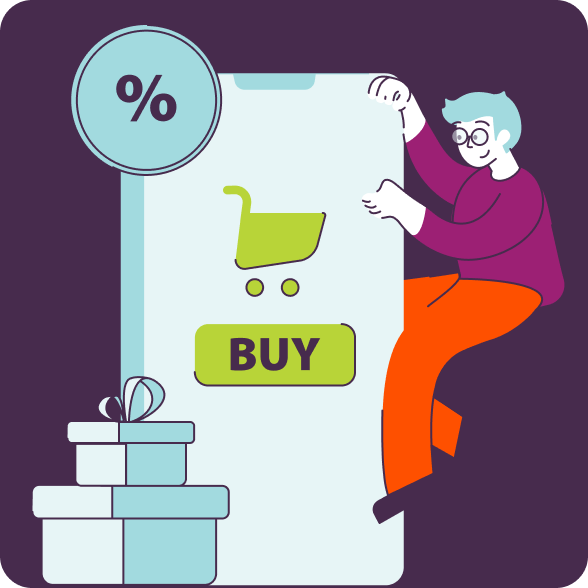The best companies today are great storytellers. They may even make and sell great products. But before they purchase a product, buyers first engage with an organization’s brand story. B2C consumers are loyal to brands like Nike, Apple, and Tesla because their brand story resonates. Brands win big by connecting with the individual consumer on an emotional level. B2B brands also connect with buyers on an emotional level—there’s just more than one buyer and they’re often convinced using stories and data.
Among B2B marketers, storytelling is a buzzword that’s often assumed to be the narrative that brands tell their buyer. In reality, impactful storytelling asks brands to identify their buyer’s challenges and create a content experience that motivates the buyer to identify a solution.
Today, buying and selling are becoming more digital. While the old world relied on face-to-face interactions and transactional relationships, modern buyer engagements are hybrid—both digital and in-person—with a greater emphasis on relationships. As buyers swap office buildings for home offices, companies have adopted new digital sales techniques in order to reach and build trust with their prospects and customers.
Connect with buyers where they are
The first part of storytelling is connecting with the buyer. With less face-to-face interaction, companies have to be more creative about how they connect with their audience. Fewer in-person events and conferences are pushing more engagement online, particularly to social media platforms like LinkedIn. An IDC survey found that seventy-five percent of B2B buyers use social media during their customer journey. But, connecting with an audience isn’t as simple as blasting corporate-sponsored content—your go-to-market (GTM) team has to connect with buyers on their terms.
Storytelling is about putting your best foot forward in the medium where your buyer is. This is why social selling is growing in popularity. In order to create successful digital conversations, sellers need to use social media to build credibility before they’re invited by the buyer for additional dialogue.
Use data to tell the right story
Modern buyers want a continuous conversation, and companies that personalize their content experience have a competitive advantage. From their inbox to social media, buyers are inundated with generic content that doesn’t address their specific needs. Businesses that invest in understanding their audience’s needs are best positioned to build trust through personalization.
With more interaction taking place online, buyers are having more conversations about their challenges and, oftentimes, your brand. Organizations that invest in social listening or pay attention to review sites can better understand customer needs and how to address them through personalized content. In fact, before you share content with a prospective customer, your salespeople should already know the challenges that they’re solving for. That’s the level of anticipation that customers expect.
Customers have also grown to expect immersive, interactive content experiences. Advancements in technology help companies deliver these experiences. Instead of presenting content unilaterally to all buyers, interactive content gives the buyer an opportunity to choose the content experience that best meets their needs. For instance, interactive content like a microapp gives buyers multiple options to choose from. Organizations can use the data from their unique content experience to better understand how to address the buyer’s real challenges. In effect, data is a resource that brands can leverage to create better buying experiences for their audience.
Always remember the buyer is the hero
Every story has a hero. While it may be tempting to make your brand the hero, the buyer is always cast in that role. Donald Miller makes this point in his book, Building a Storybrand. In digital marketing, you only get one chance to capture the buyer’s attention. To make the most of this opportunity, you have to tell your story on the buyer’s terms—which means the story is about them, not your brand.
Think about it: the buyer is on a journey to find a solution to their business challenge. Along their journey, your brand—through effective storytelling—accompanies the hero on their “hero journey” to resolve their challenge. Through insightful content, your brand can foster the hero’s growth and help guide them to their happily ever after.
By understanding your buyer’s needs and joining them on their buyer’s (i.e. hero’s) journey, you are building a relationship and brand trust. Storytelling goes beyond sharing the same singular corporate narrative. It requires your sales and marketing teams to understand your buyer’s needs and personalize content in a way that leads your buyer to the best solution for their organization.
Want to learn more about storytelling and building trust with your audience? Check out binge-worthy on-demand content from Seismic Digital Shift!
